
Overview
This article delves into ten influential psychology persuasion techniques that can significantly enhance profitability for direct-to-consumer (DTC) brands. By illustrating strategies such as:
- Social proof
- Scarcity
- Reciprocity
- Emotional appeal
It demonstrates how these psychological triggers can drive consumer behavior and markedly improve conversion rates. Each technique is backed by data and case studies, reinforcing the effectiveness of these approaches in the competitive landscape of DTC marketing.
Introduction
Understanding the psychological triggers that influence consumer behavior is essential for direct-to-consumer (DTC) brands aiming for profitability. By leveraging techniques grounded in influence psychology, these brands can refine their marketing strategies and substantially enhance conversion rates. The challenge, however, is in implementing these tactics effectively to resonate with consumers.
What are the most impactful persuasion techniques that DTC brands can adopt to attract and retain loyal customers? This article explores ten powerful influence psychology strategies that can revolutionize how DTC brands engage with their audience and drive sales.
Parah Group: Leveraging Influence Psychology for DTC Brand Profitability
Parah Group positions influence psychology persuasion as a cornerstone of its Conversion Rate Optimization (CRO) strategies. By thoroughly examining consumer behavior and strategically leveraging psychological triggers, the agency tailors its methodologies to significantly boost profitability for direct-to-consumer (DTC) brands through influence psychology persuasion.
This approach entails an in-depth analysis of user data and rigorous , which has been shown to dramatically improve success rates—companies that adopt typically see an impressive 223% average return on investment, with approximately 75% of the top 500 online retailers utilizing platforms.
Moreover, applying influence psychology persuasion principles that resonate with target audiences results in remarkable increases in average order values (AOV). For example:
- The inclusion of user-generated images can elevate sales by over 106%.
- Users who engage with Q&A content are 194.2% more likely to complete a purchase.
- Incorporating a video on a landing page can enhance conversion rates by 80%.
By aligning these strategies with insights into buyer behavior, Parah Group effectively propels growth and profitability for its clients in the fiercely competitive DTC landscape.
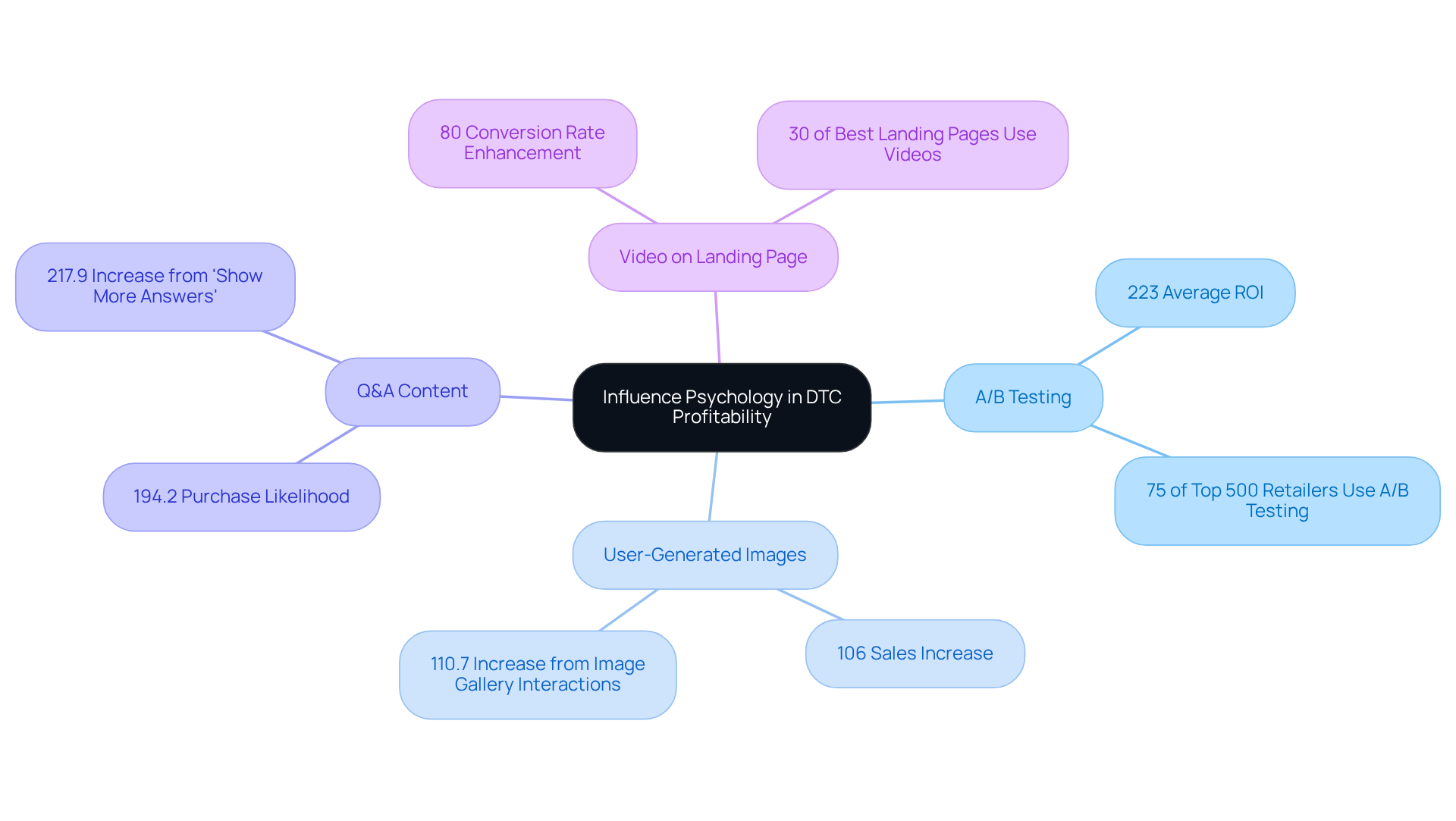
Social Proof: Harnessing the Power of Testimonials and Reviews
Social proof plays an essential role in the that affects buyer decisions. Customer testimonials and online reviews serve as powerful tools for Direct-to-Consumer (DTC) companies, enabling them to showcase positive feedback prominently on their websites and marketing materials. Remarkably, studies reveal that 88% of individuals place their trust in online reviews just as they would in personal recommendations. By presenting authentic testimonials, brands can influence psychology persuasion to cultivate trust and motivate potential customers to complete purchases, significantly enhancing conversion rates.
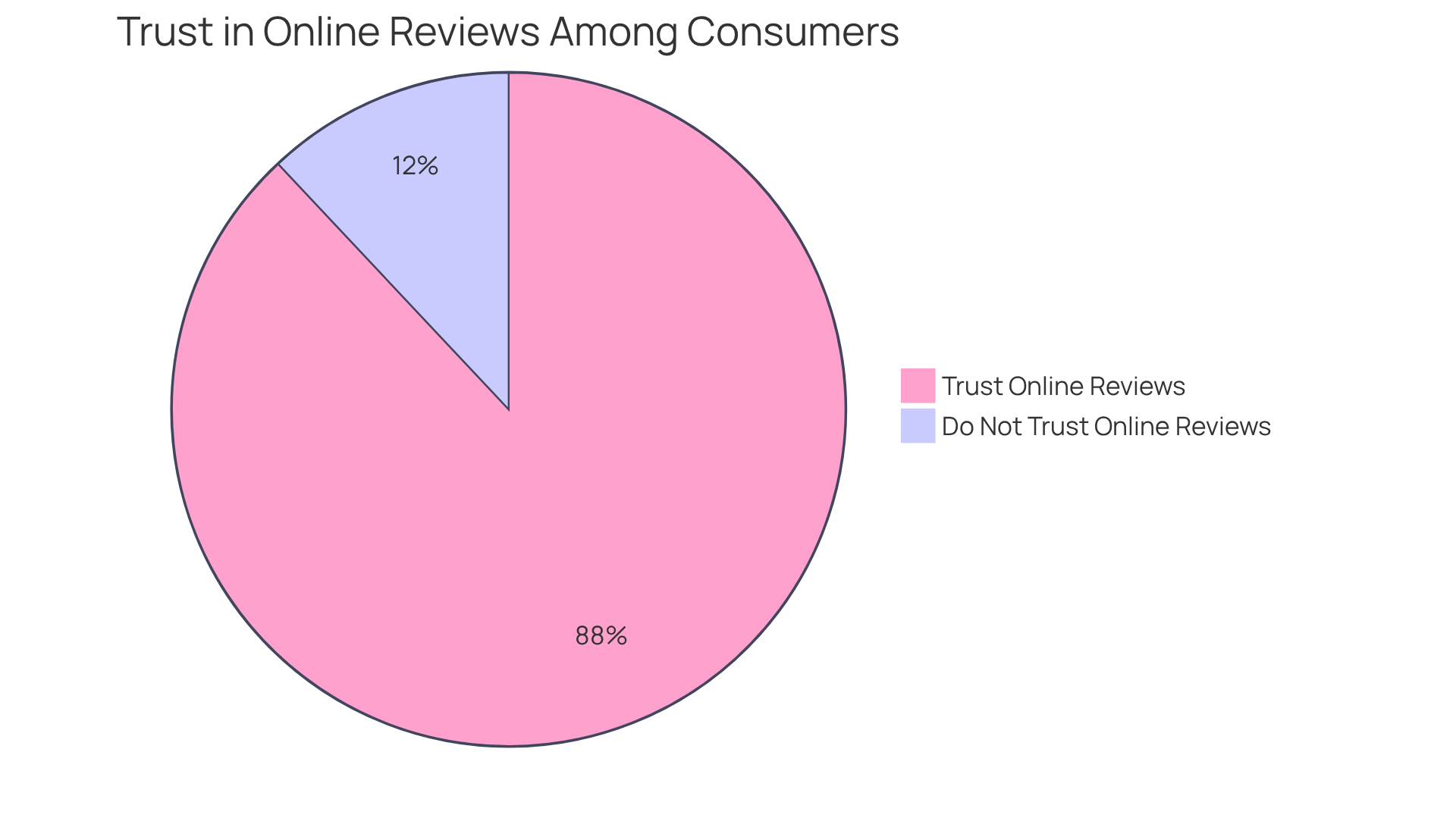
Scarcity: Creating Urgency to Drive Consumer Action
Scarcity marketing stands as a formidable strategy that instills a sense of urgency in buyers, compelling them to act swiftly to avoid missing out on limited opportunities. Techniques such as:
- limited-time offers
- countdown timers
- alerts about low stock levels
are particularly effective in driving customer action. For instance, phrases like 'Only 3 left in stock!' evoke a fear of missing out (FOMO), significantly accelerating purchasing decisions and enhancing conversion rates. Research indicates that consumers are 12-18% more likely to make a purchase when they perceive scarcity, illustrating how influence psychology persuasion through urgency affects buying behavior.
Successful DTC companies, including Nike and Starbucks, have harnessed urgency-driven campaigns, such as:
- limited edition product releases
- exclusive rewards
to create memorable shopping experiences that bolster customer loyalty and boost sales. By comprehensively understanding and implementing these urgency tactics, alongside fostering emotional connections through exclusive rewards, companies can effectively enhance their marketing strategies, utilizing influence psychology persuasion to drive higher engagement and conversion rates. DTC owners should consider integrating countdown timers and exclusive deals into their campaigns to amplify urgency and prompt swift action from shoppers.
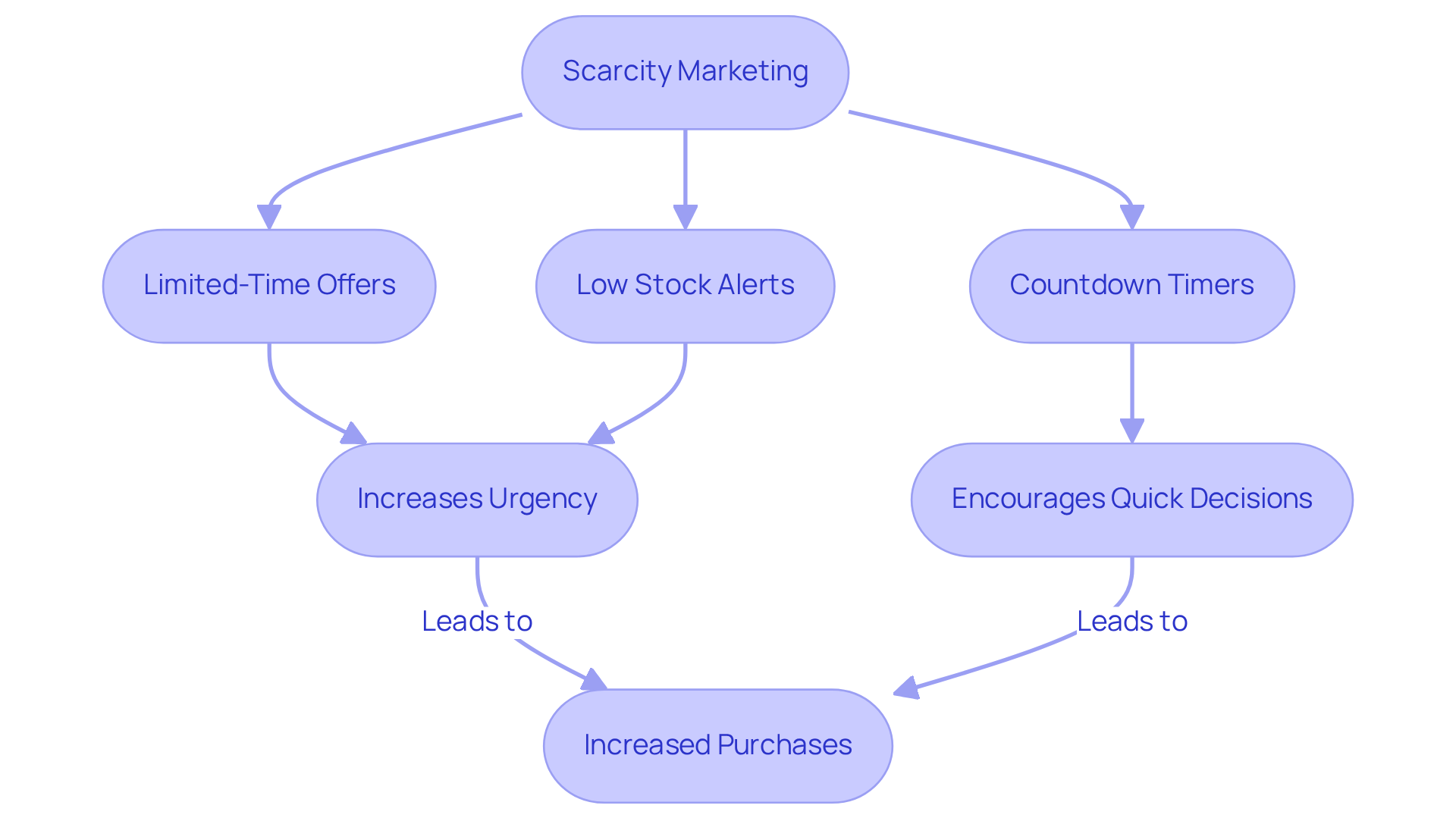
Reciprocity: Building Loyalty Through Value Exchange
Reciprocity serves as a powerful principle in influence psychology persuasion, compelling consumers to return favors when they receive something of value. Direct-to-consumer (DTC) companies can leverage this principle effectively by providing:
- Free samples
- Exclusive discounts
- Valuable content
By presenting customers with advantageous offerings upfront, these companies utilize influence psychology persuasion to foster a sense of obligation, thereby motivating purchases and further engagement with the organization. This strategy not only enhances but also encourages repeat business, solidifying the relationship between the consumer and the brand.
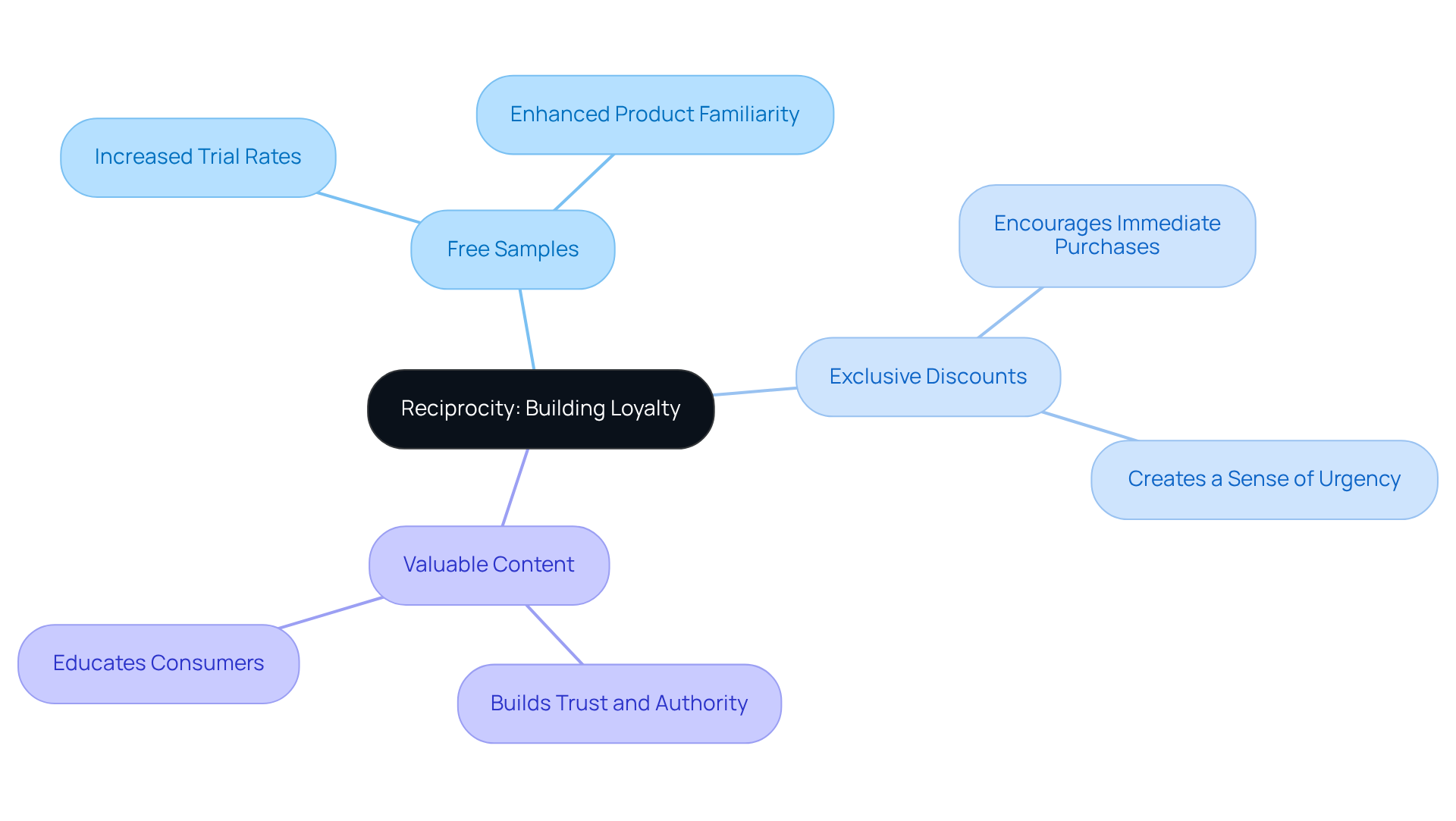
Authority: Establishing Credibility to Influence Consumer Choices
Authority in marketing signifies the credibility and trustworthiness an organization cultivates within its industry. Direct-to-consumer (DTC) companies can significantly enhance their authority by prominently showcasing:
- Expert endorsements
- Certifications
- Media mentions
For instance, displaying endorsements from industry specialists or highlighting accolades can significantly influence psychology persuasion in buyer decisions. Research indicates that individuals are more inclined to trust companies recognized as leaders in their sector, with 69% of consumers trusting influencer suggestions. This underscores the critical role that expert endorsements have in the influence psychology persuasion of purchasing choices.
Furthermore, 90% of shoppers assert that brand loyalty is essential in their purchasing decisions, emphasizing the necessity for DTC brands to establish trust. Companies that consistently communicate their narrative and leverage social proof—such as urgency notifications like '10 other people are viewing this item right now'—can experience a remarkable 20% increase in value.
However, it is crucial to recognize that 60.7% of individuals tend to trust companies less when they employ celebrity endorsements. This highlights the imperative for DTC businesses to align with credible figures and obtain certifications, positioning themselves as leaders in their field. Ultimately, this strategy drives and fosters customer loyalty.
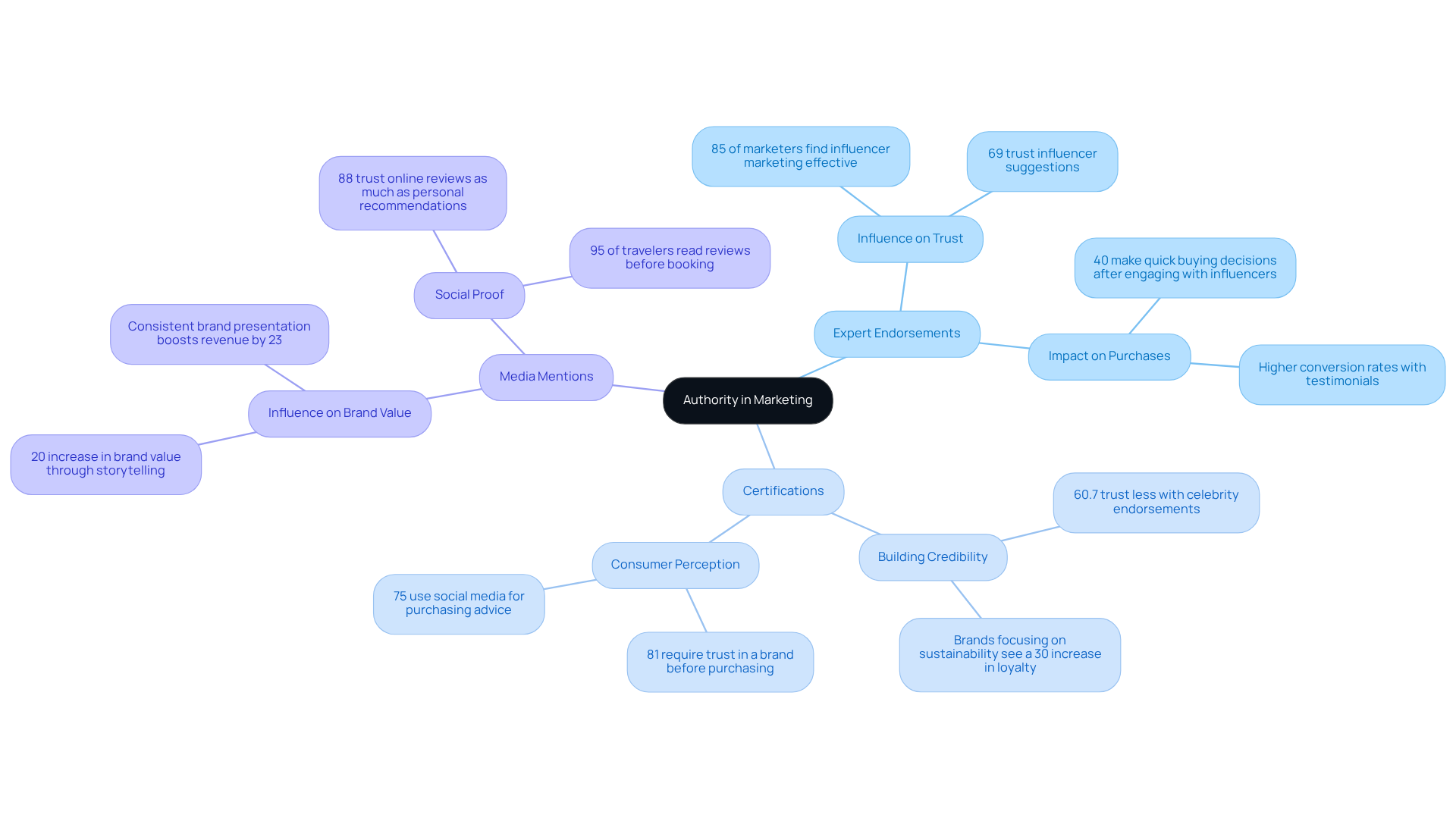
Commitment and Consistency: Encouraging Long-Term Customer Engagement
The principles of highlight that once individuals commit to a small action, they are significantly more likely to follow through with larger commitments. Direct-to-consumer (DTC) companies can strategically leverage this by encouraging initial low-cost purchases or sign-ups for newsletters.
For instance, providing a discount on the first purchase can influence psychology persuasion, enhancing customer loyalty as individuals develop a sense of obligation to continue engaging with the brand following their initial commitment.
Research reveals that loyal customers spend, on average, 67% more than new customers, underscoring the critical importance of nurturing these early interactions. Moreover, increasing customer retention rates by just 5% can elevate profits by 25% to 95%, highlighting the substantial financial benefits of prioritizing customer retention.
Brands that effectively engage customers through personalized experiences witness a 12% increase in conversion rates, demonstrating the efficacy of this approach. Additionally, as customer acquisition costs have surged nearly 60% over the past five years, the imperative to leverage small commitments to bolster customer retention and profitability has never been more pressing.
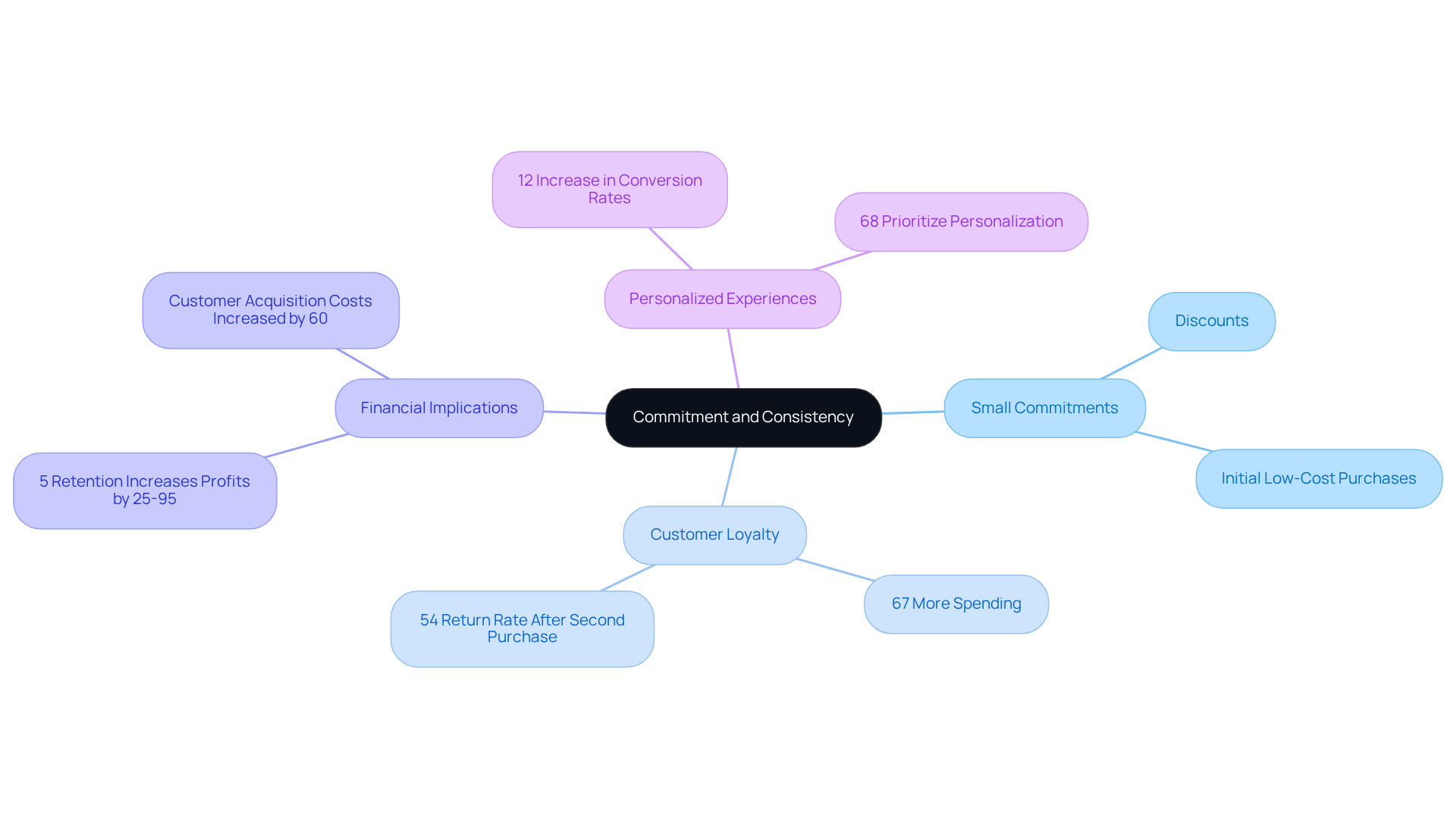
Emotional Appeal: Connecting with Consumers to Drive Conversions
Emotional appeal in marketing is crucial for connecting with individuals on a deeper level by evoking feelings such as happiness, nostalgia, or empathy. Direct-to-consumer (DTC) companies can establish these emotional connections through:
- Storytelling
- Relatable content
- Impactful visuals
For instance, campaigns that emphasize customer narratives or showcase the company's values resonate with audiences, resulting in heightened engagement and improved conversion rates. Research indicates that can trigger a 70% likelihood of purchase, while those that evoke stronger emotional responses can lead to a 23% increase in sales.
Successful examples include:
- Dove's 'Real Beauty' campaign, which challenged beauty standards and cultivated a devoted clientele
- Airbnb's '#WeAccept' campaign, which promoted inclusivity and acceptance
These initiatives not only enhanced identity but also significantly increased customer involvement, demonstrating that storytelling is an essential tool for DTC companies aiming to connect meaningfully with their audience.
However, companies must also navigate challenges such as authenticity and cultural sensitivity in their emotional marketing strategies. As the emotional marketing services market is projected to reach approximately $12.1 billion by 2030, the importance of these strategies in the current landscape cannot be overstated.

Storytelling: Engaging Consumers Through Compelling Narratives
Storytelling in marketing is a powerful tool that creates engaging narratives resonating deeply with consumers, effectively conveying a company's message. Direct-to-consumer (DTC) companies can leverage storytelling to forge emotional connections and enhance customer loyalty.
For instance, sharing a company’s origin story or spotlighting customer success stories not only renders the organization more relatable but also significantly boosts memorability. Research indicates that:
- 55% of shoppers are more likely to consider purchasing from a company with an engaging narrative.
- 92% of individuals prefer companies that produce advertisements infused with storytelling elements.
This can influence psychology persuasion, translating into sales as consumers develop a stronger bond with the company’s narrative. Moreover, stories that evoke authenticity and relatability can influence psychology persuasion, leading to a 30% increase in conversion rates and demonstrating storytelling's profound impact on consumer behavior.
Additionally, storytelling can elevate product value by as much as 2,706%, underscoring its financial significance for DTC companies. As the realm of storytelling marketing continues to grow, with a projected 46% increase in 2024, more DTC companies are recognizing its potential to cultivate loyalty and drive sales.
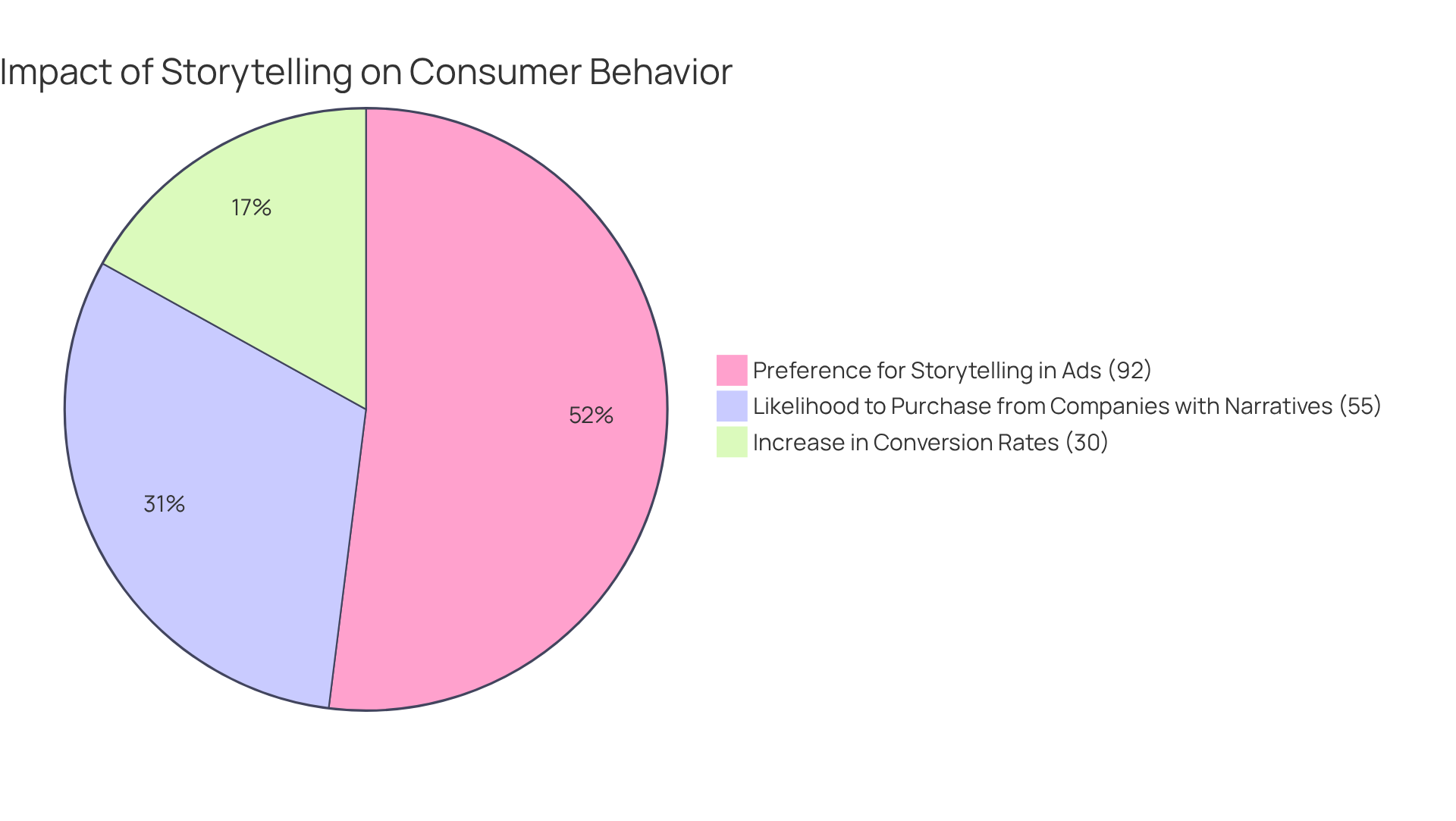
Personalization: Enhancing Consumer Experience to Boost Conversions
Personalization is the cornerstone of modern marketing, involving the customization of messages and experiences to align with individual clients' preferences and behaviors. Direct-to-consumer (DTC) companies can significantly enhance user experience by leveraging data analytics to deliver personalized recommendations, targeted emails, and tailored content.
For instance, companies that offer customized product recommendations based on previous purchases can markedly improve conversion rates; shoppers are naturally more inclined to engage with content that resonates with their interests. This strategic approach not only fosters engagement but also drives sales, demonstrating the in today's competitive landscape.
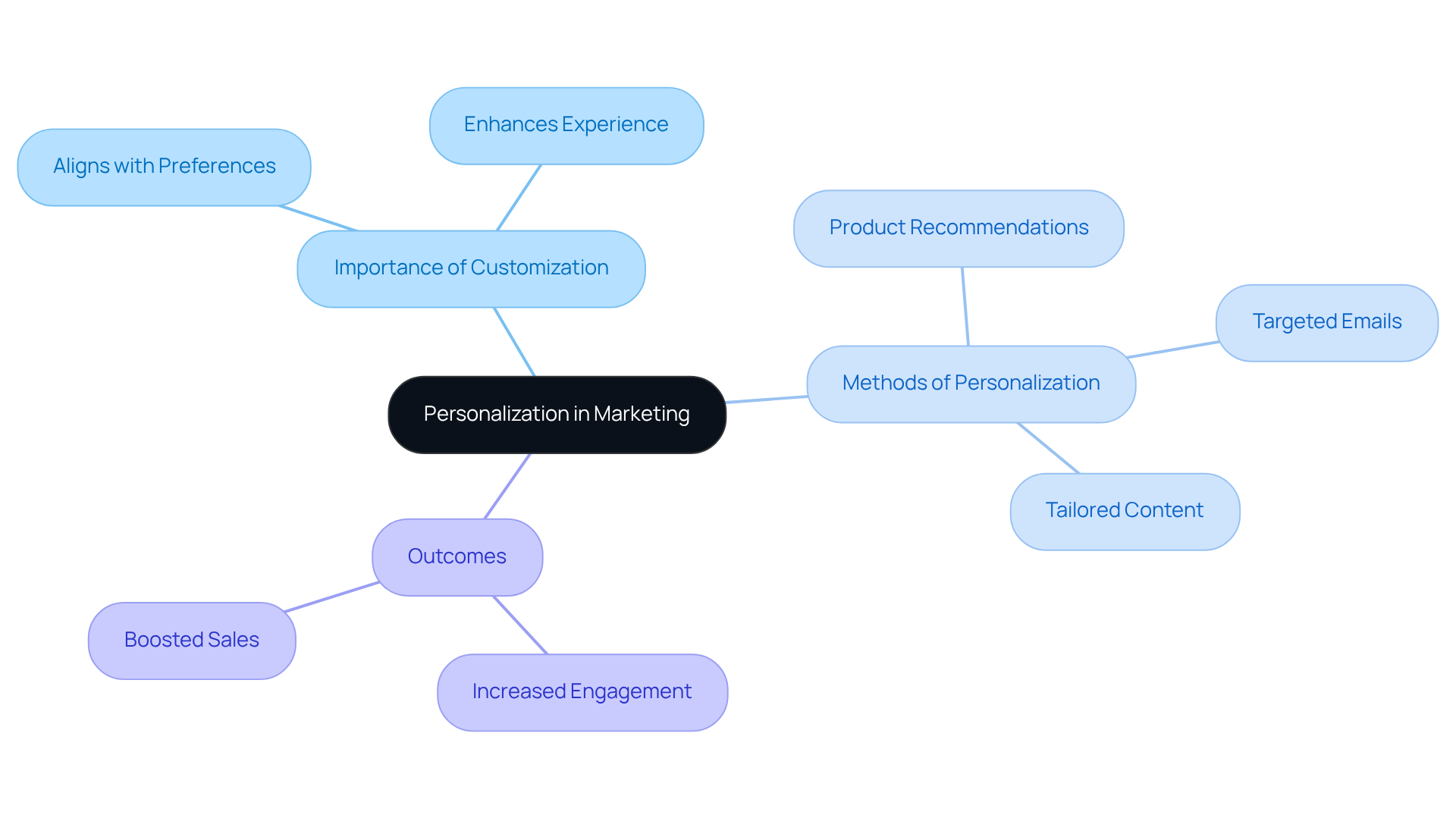
Clear Calls to Action: Guiding Consumers Towards Purchase Decisions
Clear calls to action (CTAs) are vital for influence psychology persuasion, guiding individuals toward desired actions, such as making purchases or subscribing to newsletters. DTC brands must prioritize the visibility and clarity of their CTAs, ensuring they are both prominent and compelling. Utilizing , such as 'Shop Now' or 'Get Your Discount,' instills a sense of urgency, prompting immediate consumer response. Studies indicate that urgency signals can boost successful outcomes by an impressive 332%, while merely incorporating a CTA on a landing page can improve success rates by 80%.
Moreover, the design and placement of CTAs significantly impact their effectiveness. CTAs positioned above the fold boast a visibility rate of 73%, compared to just 44% for those below the fold. Personalization further enhances effectiveness; tailored CTAs convert 202% better than generic ones. For instance, companies that include authentic visuals and social proof near their CTAs can experience engagement increases of up to 17.2%.
Successful DTC brands capitalize on these insights to create clear and effective CTAs that utilize influence psychology persuasion to resonate with their audience. By emphasizing compelling language, strategic placement, and personalization, they can significantly enhance conversion rates and drive consumer engagement. As Anmol Ratan Sachdeva aptly states, 'Your CTA should never be an afterthought.

Conclusion
Leveraging influence psychology is not just beneficial but essential for direct-to-consumer (DTC) brands that seek to enhance profitability and customer engagement. By understanding and applying various persuasion techniques, brands can forge effective connections with their audience, driving higher conversion rates and fostering loyalty. This comprehensive exploration of influence psychology underscores how strategic methodologies can transform consumer interactions into profitable outcomes.
Key strategies such as:
- social proof
- scarcity
- reciprocity
- authority
- commitment
- emotional appeal
- storytelling
- personalization
- clear calls to action
are pivotal in shaping consumer behavior. Each technique enhances the shopping experience and significantly impacts sales. For instance, utilizing social proof through testimonials builds trust, while scarcity tactics create urgency that prompts immediate purchasing decisions. These insights illustrate the profound effect of psychological principles on marketing effectiveness.
Incorporating these influence psychology techniques is not merely an option; it is a necessity for DTC brands striving to thrive in an increasingly competitive landscape. As the market continues to evolve, brands must adapt and innovate their strategies to resonate with consumers on a deeper level. Embracing these principles will not only improve conversion rates but also cultivate lasting relationships with customers, ultimately leading to sustained growth and profitability.
Frequently Asked Questions
What is the main focus of Parah Group's strategies for DTC brands?
Parah Group focuses on leveraging influence psychology persuasion as a cornerstone of its Conversion Rate Optimization (CRO) strategies to boost profitability for direct-to-consumer (DTC) brands.
How does Parah Group improve conversion rates for DTC brands?
Parah Group improves conversion rates by analyzing consumer behavior, leveraging psychological triggers, conducting rigorous A/B testing, and tailoring methodologies to resonate with target audiences.
What are the benefits of A/B testing according to the article?
Companies that adopt A/B testing typically see an average return on investment of 223%, and approximately 75% of the top 500 online retailers utilize A/B testing platforms.
What impact do user-generated images have on sales?
The inclusion of user-generated images can elevate sales by over 106%.
How does engaging with Q&A content affect purchase likelihood?
Users who engage with Q&A content are 194.2% more likely to complete a purchase.
What effect does incorporating a video on a landing page have on conversion rates?
Incorporating a video on a landing page can enhance conversion rates by 80%.
What role does social proof play in influence psychology persuasion?
Social proof, through customer testimonials and online reviews, helps DTC companies showcase positive feedback, build trust, and motivate potential customers to complete purchases.
How do consumers perceive online reviews compared to personal recommendations?
Studies reveal that 88% of individuals trust online reviews just as they would personal recommendations.
What is scarcity marketing and how does it drive consumer action?
Scarcity marketing creates urgency in buyers through techniques like limited-time offers and countdown timers, compelling them to act quickly to avoid missing out on limited opportunities.
What is the effect of perceived scarcity on purchase likelihood?
Research indicates that consumers are 12-18% more likely to make a purchase when they perceive scarcity.
Can you provide examples of DTC companies that successfully utilize urgency-driven campaigns?
Successful DTC companies like Nike and Starbucks have used urgency-driven campaigns, including limited edition product releases and exclusive rewards, to enhance customer loyalty and boost sales.
What tactics should DTC owners consider to enhance their marketing strategies?
DTC owners should consider integrating countdown timers and exclusive deals into their campaigns to amplify urgency and prompt swift action from shoppers.
FAQs











